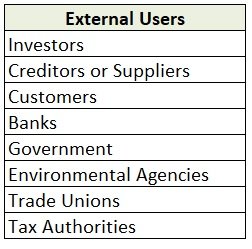A contra account is a general ledger account that is used to reduce the value of the account related to it. Basically, a contra account is the opposite of its associated account. If the associated account has a debit balance, then the contra account would have a credit balance. They are used to mainRead more
A contra account is a general ledger account that is used to reduce the value of the account related to it. Basically, a contra account is the opposite of its associated account. If the associated account has a debit balance, then the contra account would have a credit balance. They are used to maintain the historical value of the main account while all the deductions are recorded in the contra account, which when clubbed together show the net book value.
For example
if the cost of machinery was Rs. 50,000 and the company wants to preserve its original cost, then the accumulated depreciation of such machinery is recorded separately. Let’s say Rs 10,000 was the accumulated depreciation. Then such amount is recorded in the contra account named accumulated depreciation account. This makes the net value of the machinery Rs 40,000.

Types
There are various types of contra accounts such as contra asset, contra equity, contra revenue, and contra liability.
- Contra asset: these accounts have credit balances and are used to reduce the balance of an asset. Eg, Accumulated depreciation.
- Contra Liability: These accounts have debit balances and are used to reduce the balance of liabilities. Eg, discount on notes.
- Contra equity: These accounts have a credit balance and are used to reduce the number of shares outstanding which in turn reduces equity. Eg treasury stock.
- Contra revenue: These accounts have a debit balance. They reduce gross revenue which results in net revenue. Eg sales return.
Accountants make use of contra accounts instead of reducing the value of the actual account to keep the financial statements clean.
See less



Workmen Compensation Reserve as the name suggests is a reserve created by the company to compensate its employees in the event of any uncertainty in future. It is created to protect the interest of workers in the company. Workmen Compensation Reserve Account is generally given effect in case of admiRead more
Workmen Compensation Reserve as the name suggests is a reserve created by the company to compensate its employees in the event of any uncertainty in future. It is created to protect the interest of workers in the company.
Workmen Compensation Reserve Account is generally given effect in case of admission, retirement of partners or dissolution of firm.
If there is a change in the estimated value of reserve it is given effect during the revaluation of assets and liabilities.
Journal entry if the existing reserve is less than the new estimated amount:
Revaluation A/c (Dr)
To Workmen Compensation Reserve A/c
The reserve is credited because we need to create more than the existing reserve, since the new estimated liability is more than the existing.
Journal entry if the existing reserve is more than the new estimated amount:
Workmen Compensation Reserve A/c (Dr)
To Revaluation A/c
The reserve is debited because we need to decrease the existing reserve, since the new estimated liability is less than the existing.
If a worker claims compensation, it is said to be a liability against the reserve. In case of dissolution, any such liability against workmen compensation reserve takes priority to be paid off according to the law.
Journal entry in case of claim against reserve is:
Workmen Compensation Reserve A/c (Dr)
To Workmen Compensation Claim
The amount is transferred from the reserve to a new liability, hence the reserve is debited and the claim is credited.
If there are not sufficient funds in the firm to pay the liability, partners will have to bring funds from their personal assets to pay the workers.
Journal entry when partner’s have to bring funds:
Partner’s Capital Account (Dr)
To Workmen Compensation Reserve A/c
Partner’s need to bring funds to fulfill the liability, hence there account is debited and since the reserve is increased, hence it is credited.
If there is no liability against the Workmen Compensation Reserve then it is distributed amongst the partners in their existing profit-sharing ratio.
Journal entry for distribution of reserve is:
Workmen Compensation Reserve A/c (Dr)
To Partner’s Capital Account
Since, reserve is more than required it is distributed among partners, hence their account is credited and as the reserve decreases, it is debited.
See less